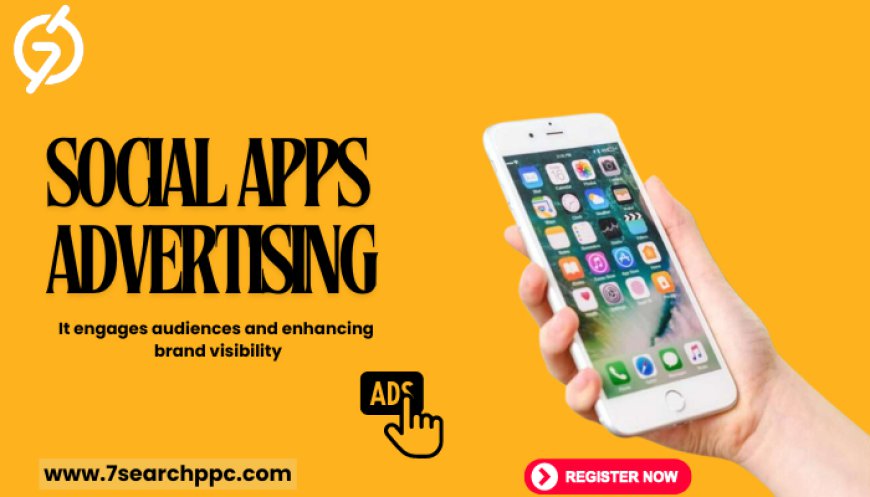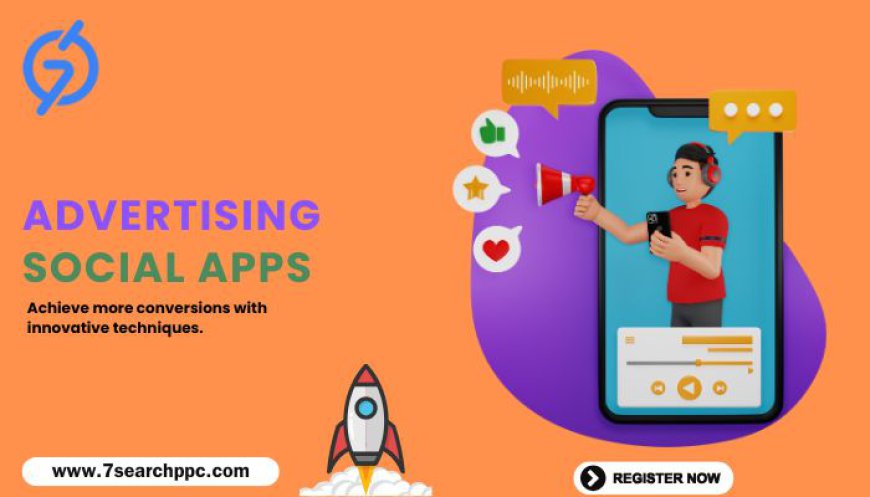Choosing the Right Social Apps Advertising Platform for Your Business
Discover how to choose the ideal social apps advertising platform for your business. Maximize your reach, target the right audience, and boost engagement effectively
In today's digital landscape, social apps advertising platforms have become essential for businesses looking to reach and engage their target audience effectively. With the rise of mobile applications, companies can leverage social ad networks to promote their products and services through various advertising formats such as native ads, banner ads, and more. This article will guide you through the process of choosing the right social apps advertising platform for your business, covering key factors, features, and trategies to maximize your advertising efforts.
>>>>>Register Now<<<<<
Understanding Social Apps Advertising Platforms
What is a Social Apps Advertising Platform?
A social apps advertising platform allows businesses to promote their products and services through advertisements displayed within social applications. These platforms typically offer various advertising formats, including native ads, banner ads, and video ads, allowing marketers to tailor their strategies based on their specific objectives.
Why Use a Social Apps Advertising Platform?
Utilizing a social apps advertising platform can provide several benefits:
- Targeted Reach: Businesses can target specific demographics, interests, and behaviors, ensuring that their ads reach the right audience.
- Cost-Effective Advertising: With models like PPC (Pay-Per-Click) and CPM (Cost Per Mille), businesses can manage their advertising budgets effectively.
- Measurable Results: Most advertising platforms offer analytics and reporting tools, enabling businesses to track the performance of their campaigns and make data-driven decisions.
Factors to Consider When Choosing a Social Apps Advertising Platform
Target Audience
Understanding your target audience is crucial in selecting the right social apps advertising platform. Consider the following:
- Demographics: Identify the age, gender, location, and interests of your audience.
- Platform Popularity: Different platforms may cater to different demographics. For example, younger audiences may be more active on platforms like TikTok or Instagram, while professionals may prefer LinkedIn.
Advertising Formats
Evaluate the types of advertising formats supported by the platform:
- Native Ads: These ads blend seamlessly with the content, making them less intrusive and more engaging for users.
- Banner Ads: Traditional banner ads can be effective for brand visibility but may require careful design to avoid banner blindness.
- Video Ads: With video content gaining popularity, consider platforms that support video ads for dynamic storytelling.
Budget and Pricing Model
Different platforms offer various pricing models, including:
- PPC (Pay-Per-Click): You only pay when users click on your ad. This model is effective for driving traffic to your website.
- CPM (Cost Per Mille): You pay for every 1,000 impressions your ad receives. This model is suitable for brand awareness campaigns.
Analytics and Reporting Tools
Effective measurement and analysis are crucial for optimizing advertising campaigns. Look for platforms that provide:
- Performance Metrics: Key performance indicators (KPIs) such as click-through rates (CTR), conversion rates, and return on ad spend (ROAS).
- A/B Testing: The ability to test different ad creatives, formats, and targeting options to determine what works best.
User Experience
The user experience of both advertisers and consumers is essential. Choose a platform that is user-friendly and provides:
- Intuitive Interface: A clean and easy-to-navigate dashboard simplifies the ad creation and management process.
- Customer Support: Access to reliable customer support can help resolve issues quickly and enhance your advertising experience.
Popular Social Apps Advertising Platforms
Facebook Ads
Facebook Ads is one of the most widely used social apps advertising platforms, offering a variety of ad formats and targeting options. It allows businesses to reach a vast audience across Facebook and Instagram. Key features include:
- Advanced Targeting Options: Businesses can target users based on their interests, behaviors, and demographics.
- Diverse Ad Formats: Options include photo ads, video ads, carousel ads, and more.
Google Ads
While primarily a search advertising platform, Google Ads also offers display ads on social media and other websites. Key advantages include:
- Extensive Reach: Google Ads can reach users across various platforms, including YouTube and partner sites.
- Flexible Budgeting: Businesses can set daily budgets and choose between PPC and CPM models.
Twitter Ads
Twitter Ads allows businesses to engage with users through promoted tweets, trends, and accounts. Key features include:
- Real-Time Engagement: Advertisers can interact with users in real-time, capitalizing on trending topics.
- Custom Audiences: Target specific user segments based on their interests and behaviors.
LinkedIn Ads
For B2B businesses, LinkedIn Ads provides a platform to reach professionals. Key features include:
- Professional Targeting: Advertisers can target users based on their job title, industry, and company size.
- Sponsored Content: Native ads appear directly in users’ feeds, increasing engagement.
TikTok Ads
With its rapid growth, TikTok Ads has become a popular platform for reaching younger audiences. Key features include:
- Creative Ad Formats: Businesses can utilize in-feed ads, branded effects, and hashtag challenges to engage users.
- Viral Potential: TikTok’s algorithm can help ads go viral, increasing brand exposure.
Strategies for Effective Social Apps Advertising
Define Clear Goals
Before launching your campaign, define clear and measurable goals. Common objectives include:
- Brand Awareness: Aim to increase visibility and recognition of your brand.
- Lead Generation: Focus on capturing leads through sign-ups or inquiries.
- Sales Conversion: Drive direct sales through targeted promotions.
Optimize Ad Creatives
Your ad creatives play a significant role in engagement. Consider the following:
- Compelling Visuals: Use high-quality images or videos that resonate with your audience.
- Clear Call-to-Action (CTA): Encourage users to take action with clear and concise CTAs.
Utilize A/B Testing
A/B testing allows you to experiment with different ad variations to determine which performs best. Test different elements, including:
- Ad Copy: Experiment with different headlines and descriptions.
- Images and Videos: Test various visuals to see which ones attract more engagement.
Monitor and Analyze Performance
Regularly monitor the performance of your ads using the analytics tools provided by the platform. Look for insights such as:
- Click-Through Rates (CTR): Measure the percentage of users who click on your ad.
- Conversion Rates: Track how many users take the desired action after clicking.
Adjust Your Strategy
Based on your performance analysis, be prepared to adjust your strategy. This may include:
- Reallocating Budget: Shift your budget towards higher-performing ads or platforms.
- Refining Targeting: Adjust your audience targeting based on the data you collect.
Conclusion
Choosing the right social apps advertising platform is a crucial step in maximizing your marketing efforts. By considering factors such as target audience, advertising formats, budget, and analytics capabilities, you can select a platform that aligns with your business objectives. By leveraging the features of social ad networks effectively and implementing strategic advertising practices, your business can increase visibility, engagement, and ultimately drive conversions in today’s competitive digital landscape.
FAQs
What is the best social apps advertising platform for small businesses?
Ans. The best platform for small businesses often depends on their target audience and marketing goals. Facebook Ads and Instagram Ads are popular choices due to their extensive targeting options and user base.
How much should I budget for social apps advertising?
Ans. Budgeting for social apps advertising can vary widely based on your goals, audience size, and competition. Starting with a modest budget and gradually increasing it as you gain insights is a common approach.
What types of ads are most effective for social apps?
Ans. Native ads and video ads tend to be highly effective in social apps due to their engaging nature and ability to blend seamlessly with user content.
How can I measure the success of my social apps advertising campaigns?
Ans. You can measure success by tracking key performance indicators (KPIs) such as click-through rates (CTR), conversion rates, and return on ad spend (ROAS) through the analytics tools provided by the advertising platform.
What is the difference between PPC and CPM advertising models?
Ans. PPC (Pay-Per-Click) charges advertisers only when a user clicks on their ad, while CPM (Cost Per Mille) charges advertisers based on the number of impressions (1,000 views) their ad receives, regardless of whether users click on it.


 stevehawk_123
stevehawk_123 